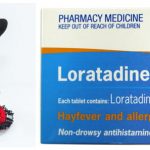Marshmallows are a classic treat that you can eat on its own or as a topping to your hot cocoa. You can use them for mouth-watering baked treats, too, like S’mores or even in a brownie.
But what if you accidentally dropped them while making your dessert and your dog happens to gobble them down before you even realized what’s happening? Will these sugary treats harm your dog? Let us find out whether marshmallows are safe for dogs or not.
Can Dogs Have Marshmallows?
Yes, dogs are allowed to occasionally eat marshmallows. Marshmallows are basically sugar and sugar is not really toxic to dogs. They also contain gelatin that is deemed to be safe for canines.
Can dogs eat Peeps candy? Yes, because they are simply marshmallows in various shapes and sizes. Feeding your pet one or two pieces of these candies from time to time will not make him sick.
It is important to watch your dog’s sugar intake. In spite of the fact that marshmallows are not toxic, take note that sugar remains a no-no for canines. In excessive amounts, it can take a toll on their body because dogs are not very capable of processing sugar.
Does your dog end up being very hungry after consuming sugary treats? Because your dog does not metabolize enough sugar, he might have a ravenous appetite afterward. He might even look lethargic and just want to sleep throughout the day.
According to the “Original Dog Bible: The Definitive Source for All Things Dog”, the sugar in the canine’s blood spills over into the urine. This causes frequent urination in large volumes.
Due to the amount of the water lost, a dog’s body attempts to make up for it by consuming more liquid. Thus, you would see your dog drinking larger quantities of water, more than he usually does. This only causes more trips to the bathroom.
Do not over-feed your dog with marshmallows or Peeps candies. Giving him too many of these treats is like feeding him a bomb made of sugar. Also, do not forget to brush his teeth after consuming sugary treats.
Are Marshmallows Bad For Dogs?
Originally, marshmallows were made from marsh mallow roots, hence the name. The plant itself is used for medicinal purposes, so we can safely say that the marshmallows were wholesome treats back then.
Although the old-fashioned marshmallows were super sweet, they did not contain so many artificial ingredients. They were only created using root saps and sugar.
The marshmallows we know today are created by combining sugar, water, gelatin, and cornstarch. Store-bought marshmallows may use other sweeteners and emulsifying agents. They might contain corn syrup, dextrose, Tetrasodium Pyrophosphate as a whipping aid, and artificial flavors.
Store-bought marshmallows are packed with empty calories. Based on the Self Nutrition Data, an ounce of marshmallows contains 89 calories that come mostly from sugar.
Every ounce (or 28 grams) of marshmallows has as much as 97% carbs, 2% protein and the remaining 1% is fat. Because of the marshmallows’ sugar content, you should avoid giving them to a diabetic or obese dog. These candies could only add unwanted amounts of calories.
The Effect of Marshmallows on Dogs
Marshmallows usually contain lots of sugar, which can contribute to excessive gas production and bloating. Dog bloating, also known as gastric dilatation volvulus in veterinary terms, happens when a dog’s stomach dilates and rotates around its short axis.
Bloating can be a life-threatening condition. In fact, it is named as the second cause of death in dogs, next to cancer. Keep an eye for these symptoms of bloating:
- Your dog suddenly becomes lethargic
- He has an abnormally fast heart rate
- He is trying to throw up but nothing comes out
- He is displaying signs of discomfort or pain
- He is panting rapidly
What are the other risks of feeding marshmallows to dogs? Marshmallows can cause diarrhea in canines, so your pet might take frequent trips to the bathroom. If he started having a bad case of diarrhea because of these candies, it’s best to consult your vet. There might be other stuff in the marshmallows that are making your dog ill.
It is also possible for a dog to vomit after getting into a bag of marshmallows. Check if the candies contain ingredients that are toxic to dogs, such as chocolate and xylitol.
What To Do If Dog Ate Marshmallows?
There is no reason to panic if your dog only ate a few pieces of plain mallows. Some dogs turn out to be okay even after consuming half a bag of mallows. But there have been reported cases of bloating after a dog ingested more than two bags of marshmallows.
In the event that your dog ate quite a large quantity of marshmallows, bring him to the nearest emergency vet clinic. Don’t wait too long, especially if he has been displaying out of the ordinary symptoms because your dog might be suffering from bloating.
There is no known home remedy for gastric dilatation volvulus. Don’t attempt to give him over-the-counter medications to treat bloating, especially if they have not been approved by your vet.
Healthy Marshmallow Recipes for Dogs
Making healthy marshmallows is fairly simple. If your pup happens to love marshmallows but the sugar in them is freaking you out, you’ll be glad to know that making sugar-free marshmallows is easy-peasy.
It is better to make your own version of marshmallows for your dog rather than buying them from the grocery store. This way, you know exactly what has gone into your dog’s food.
Many store-bought sugar-free marshmallows contain xylitol that is toxic to dogs. While some brands claim they do not have sugar, they still contain high fructose corn syrup that can also harm your dog.
Are you ready to experiment in the kitchen? Here are some of the best marshmallow recipes we found, that are dog-friendly for sure:
Raspberry Paleo Marshmallows
Raspberries are among the best types of berries for dogs. These berries are rich in fiber that makes your fur baby feel full after eating. Raspberries are an excellent source of B Vitamins, folic acid, and copper. Check out this marshmallow recipe that uses raspberry as the main ingredient:
1.Grind the freeze-dried raspberries in a food processor until they are crushed in the form of a fine powder. Set aside 2 tablespoons for coating.
2.Line a pan with a parchment paper greased with coconut oil. Dust it with a small amount of arrowroot.
3.Mix two packets of gelatin to ¼ cup of water. Stir and set aside.
4.In a saucepan, mix a cup of honey to half a cup of water and ¼ teaspoon salt. Bring to boil under medium heat. Keep whisking while the mixture gently boils. Turn the heat off.
5.Whisk in the gelatin and water mixture until you get your desired smoothness.
6.Using a stand mixer beat your syrup on a high speed until you get a lava-like texture. Add in the crushed raspberries and beat until they are well-combined with the honey syrup.
7.Scoop out your marshmallows on the pan you prepared earlier. Sprinkle them with a bit of the crushed raspberry.
8.Let the marshmallows dry for around 4 hours. There is no need to put your marshmallow mixture in the fridge.
9.Coat the dried mixture using the raspberry powder you set aside.
10.Store the marshmallow candies in an airtight container to keep them fresh.
This recipe uses freeze-dried raspberries, meaning they were dehydrated to remove the water from the fruit. If you are worried that the freeze-dried variety of the fruit contains preservatives, consider buying them from specialty outlets. You can find preservative-free and sugar-free freeze-dried raspberries in health food stores.
Mint Marshmallows
Mint is generally safe for dogs, as long as it is given in small amounts. It is even used to freshen up a dog’s breath. While this marshmallow recipe uses sugar, it uses pure cane sugar that undergoes less processing compared to table sugar. Here’s how to do a corn syrup-free marshmallow, made yummier with mint:
1.In a stand mixer, thoroughly combine 7 tablespoons of gelatin and ¾ cup of water. Set aside.
2.In a medium saucepan, boil ¾ cup of water and half a cup of powdered sugar. Let it boil for only around 3 minutes.
3.Slowly whip in your hot syrup to the gelatin mixture. Do it while the mixer is running on medium speed.
4.Continue beating until the mixture looks fluffy. It should not take more than 12 minutes.
5.Once the mixture is fluffy, add a teaspoon of mint extract. You may use less than this if you just want to give it a light minty flavor.
6.You may add a bit of food coloring if you prefer, but you can totally skip this part.
7.Once the mixture is ready and the mint extract has been added, scoop it out on a pan that is greased and lined with parchment paper.
8.Leave the mixture cool overnight for it to firm up. You may use a plastic food wrap but you don’t need to refrigerate your marshmallows.
9.Cut them the next day using kitchen scissors.
10.Put them in an airtight container and keep in the fridge.
To make this marshmallow more wholesome, consider buying organic gelatin powder. This type of gelatin was produced from animals that were grass-fed. Pasture-raised animals were not exposed to antibiotics and only ate natural grains and crops. You can easily buy organic gelatin powder because it is now widely available online.
Honey-Sweetened and All Natural Marshmallows
In moderate amounts, honey can be a good addition to a dog’s diet. This recipe uses raw honey that is beneficial for canines due to its antibacterial and anti-inflammatory properties. Raw honey is being used to treat allergies caused by pollen. When your dog enjoys the natural sweetness of raw honey, consider this marshmallow recipe for him:
1.In a medium-sized bowl, sprinkle 3 tablespoons of gelatin powder over half a cup of water. Set it aside.
2.Create your honey mixture by mixing 200 grams of raw honey, ¼ teaspoon of sea salt, and ½ cup of water in a saucepan. Stir continuously for about 7 minutes or until it boils gently. Set the heat to medium-low. Turn off the heat.
3.Combine your honey syrup with the gelatin mixture you set aside earlier. You may use a mixer to make sure everything is well-combined.
4.Add ½ teaspoon of vanilla powder and continue whisking until you get a fluffy and thick consistency.
5.Now that your marshmallow mixture is all set, scoop it out in a dish lined with parchment paper and drizzled with a bit of coconut oil.
6.Refrigerate it without a cover and wait for it to be firm. It may take an hour or two for that to happen.
7.Use kitchen scissors to cut the marshmallows into squares and store them in an airtight container.
This recipe uses vanilla powder that is definitely safe for dogs. Unlike the vanilla extract, the powder does not contain alcohol that could poison your dog. One more tip in storing marshmallows – you could put them in the freezer so they last longer. Frozen marshmallows can last up to three months.
While these recipes are healthier than the usual ones you can find in the supermarket, they should not be used as substitute to real food. Don’t forget that marshmallows are just treats. They should only be given as snacks and are not meant for regular consumption.
Conclusion
Marshmallows are not toxic to dogs as long as they do not contain chocolate or xylitol. Just don’t over-feed your pet with marshmallows and he will surely be fine. You can give dog one to two pieces of marshmallows from time to time.
For a more wholesome option, consider making sugar-free marshmallows! That way, you can even incorporate healthy ingredients into your own candies, including raspberries, honey, and mint. Marshmallows are easy to do and you know exactly what’s in them.






















